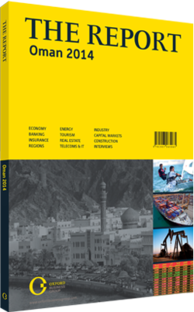A specialised approach: Two new medical cities are under development
In addition to Oman’s expanding health budget, there is growing momentum to support the establishment of quality private facilities locally, and this effort should receive a welcome fillip from the approval of several large-scale health projects. Two of these projects aim to raise the sultanate’s profile within the global medical community by creating internationally competitive health infrastructure with a focus on specialised care.
Salalah Medical City
The Salalah Medical City, also known as International Medical City (IMC), is slated to be the first of its kind in the region. In January 2013 US-based General Electric (GE) signed a partnership agreement with Oman’s Apex Medical Group, a subsidiary of the Saudi-based Al Joaib Group, to construct the $1bn IMC in Salalah. The two groups are set to explore opportunities in all areas of the city, such as health care, energy, water, and home and business solutions. The facility will cover 87,000 sq metres, with construction set to commence in early 2014.
The project is intended to proceed in three phases. Phase I is set to focus on the health care complex and is planned for opening in 2016. Phases II and III would include peripheral facilities and are scheduled for completion by 2018 and 2020, respectively. The health care cluster of the facility is designed to house a 530-bed tertiary care multi-specialty hospital and three centres of excellence: the region’s first transplant and dialysis centre, a rehabilitation centre and a diagnostic centre. Other facilities will include a trauma and emergency unit, ambulatory services, an intensive care unit, organ transplant donor registry and a four-star hotel.
Apex would be able to access GE transplant and diagnosis technology to serve the IMC’s tertiary care hospital. GE would also provide the necessary technology during the design and construction period, including sustainable solutions for power generation (i.e. solar, wind and gas) and water and lighting technologies.
Muscat/Batinah Medical City
Also in early 2013, the Ministry of Health (MoH) announced the second medical city in the pipeline: an OR570m ($1.48bn), 5msq-metre facility to be located between Muscat and the North Batinah region, one of the most highly populated areas of Oman. According to the MoH, the project management tender was set to be floated by the end of 2013; in August 2013 the health minister established a committee to coordinate and supervise the project. Dr Ahmed Al Qasmi, director-general of planning at the MoH, said Oman’s Cabinet approved the proposal for the medical city, and in early 2013 the government was conducting land surveys.
The project itself is in the conceptual design stage, and it plans to host a cluster of hospitals, including a general hospital, children’s hospital, trauma centre and an organ transplant hospital. Additional facilities will include an imaging centre and various laboratories. The next step in the project’s development is for the government to float a tender for a specialised project management company to begin work. The tender was anticipated for late 2013, and Dr Ahmed bin Mohammed Al Saeedi, the minister of health expects the first phase of the medical city to be completed by 2016. “We will need international companies to help us in designing and structuring our new hospitals,” he told international media in June 2013. “Considering that only 30% of the doctors are Omani and 70% are expatriates, we will need more expatriates to come and work in Oman.”
Conference & Exhibition
To attract international attention to its upcoming projects and arrange new public-private partnerships, the first Oman Healthcare Conference and MedHealth and Wellness Exhibition took place in September, 2013. In addition to the country’s recent investments and infrastructure development projects, other issues discussed included emergency medicine and solutions to leading health issues in the GCC region, such as diabetes and coronary diseases.
Over 60 local and international firms from countries including China, Jordan, the UAE, Poland, the US, Malaysia, Thailand, Italy, Germany, Turkey, Japan, South Korea and Iran took part in the conference, alongside government officials, international experts and academics.
You have reached the limit of premium articles you can view for free.
Choose from the options below to purchase print or digital editions of our Reports. You can also purchase a website subscription giving you unlimited access to all of our Reports online for 12 months.
If you have already purchased this Report or have a website subscription, please login to continue.

